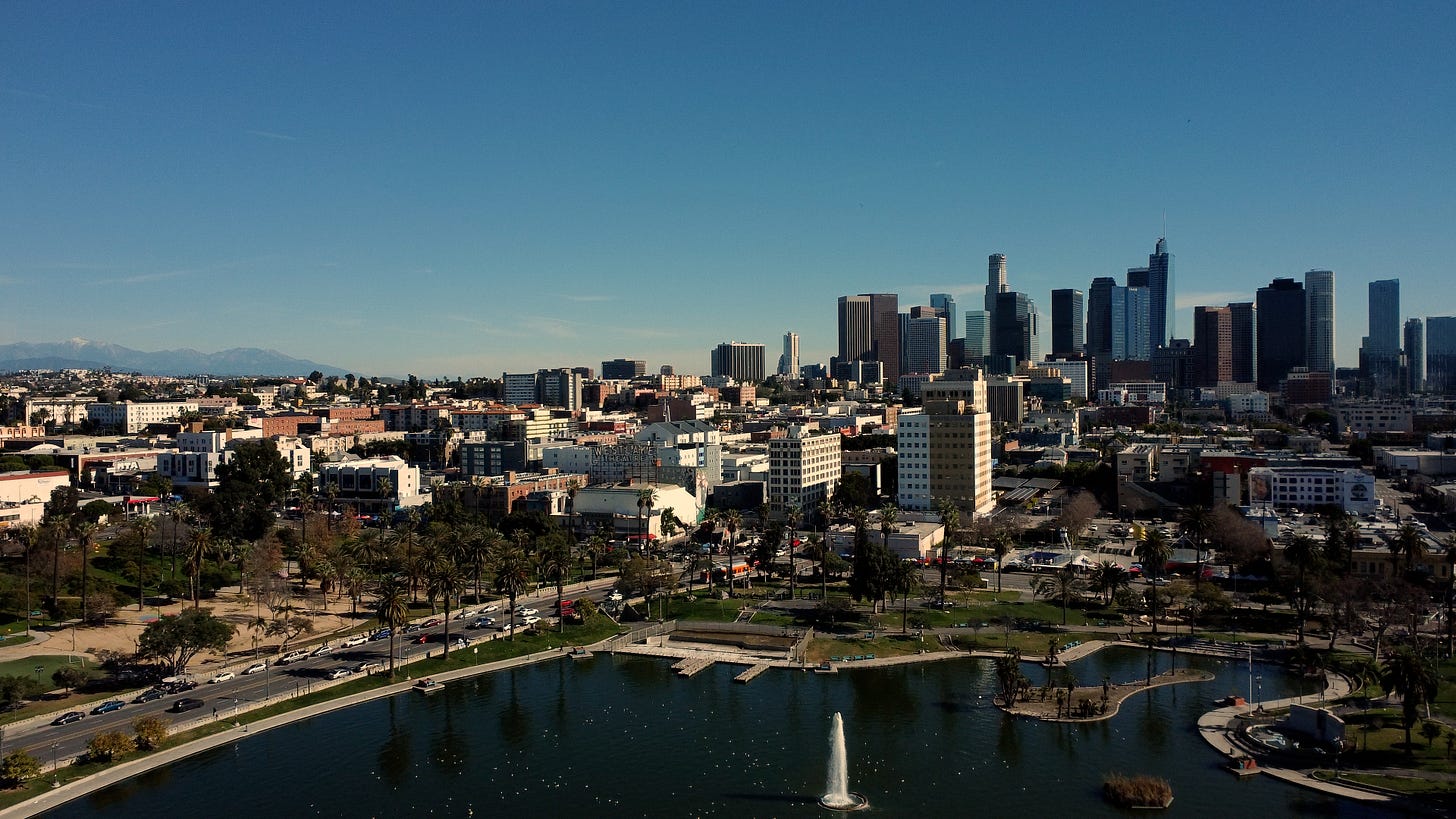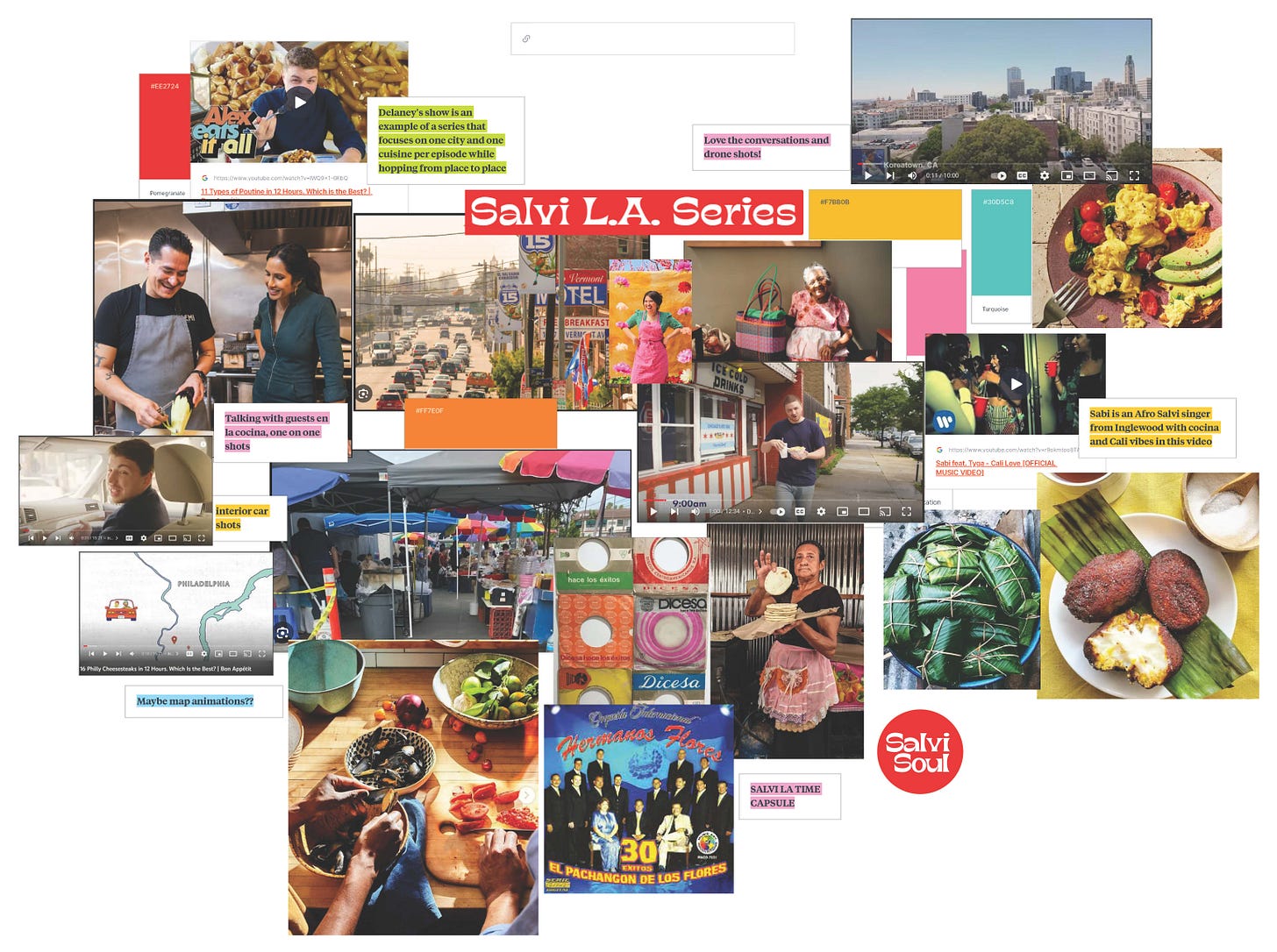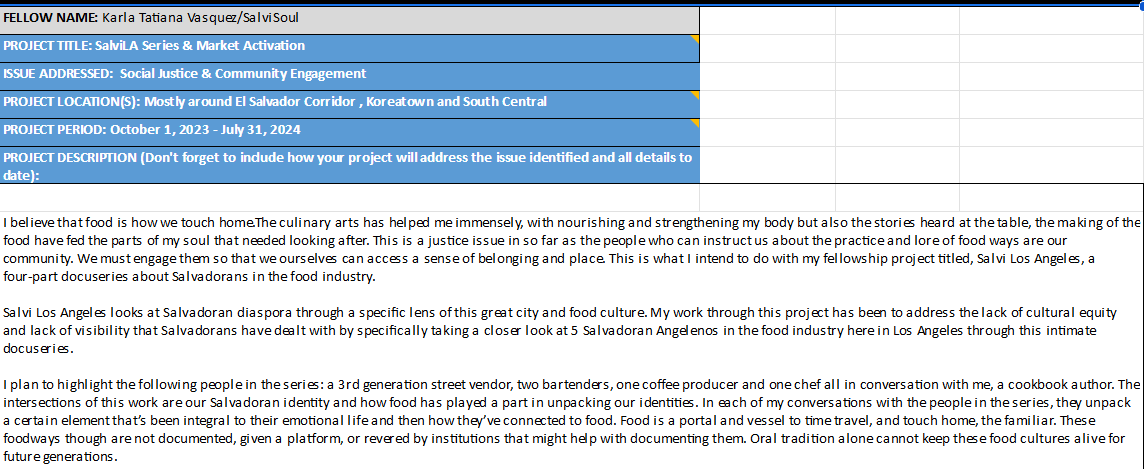How Las Señoritas en Tangas Sparked My Vision for a Salvadoran Food Docuseries
Unpacking Memory, Music, and the Stories That Shaped Salvi Los Angeles
I don’t talk about my grandfathers much. One passed tragically in El Salvador, there’s more to it than that (there always is). The other? Well, my relationship with him is… nuanced. Maybe you understand?
I grew up loving and protecting my grandfather. As an adult, I’ve realized how that love also meant enabling aspects of our culture that celebrate and uphold misogyny and patriarchal values. But this post isn’t about that. I bring him up, because he’s the reason I know about las señoritas en tangas. Young ladies in thongs. Let me explain.
Whenever I walked into my grandparents’ apartment, I was greeted by an enormous media console stacked with media towers filled with CDs, albums, and cassette tapes—mostly Salvadoran cumbia, with some Latin American favorites sprinkled in like bands from Colombia and Mexico. And the covers? Always on full display.
Nobody ever told me not to look at them. Even though my immediate family and I went to an Evangelical church, these images were never forbidden. Or at least, I don’t remember any adult making an effort to hide them.
The covers always followed the same formula: Women with voluminous ’80s hair, posing suggestively in neon-colored bikinis, tiny polyester triangles barely covering their chests, matching bottoms hiked high above their hips, elongating their perfectly tanned legs. A tropical fantasy. A good time. So sexy it wasn’t even sexy, it was just the norm. Skin wasn’t shocking. It was expected. And the men? They were always in matching colorful suits, looking festive but not the focal point.
The soundtrack to this visual spectacle was always playing in the background—cumbia music videos on TV, women in short skirts and bikinis, dancing poolside, swaying their hips effortlessly. And as I flipped through my grandfather’s collection, I couldn’t help but notice: If you wanted to move your ass to cumbia, chances were you were going to see some ass too. And maybe it wasn’t on every album cover, but as a young kid, these images left a lasting imprint on my memory.
But what stuck with me most wasn’t the barely-there outfits. It was the message. This music, these images, they painted a picture of El Salvador that said, It’s a party over here. It’s vibrant, it’s joyful, the music is great and this is a place you wouldn’t want to leave.
My entire family loved this music, scantily clad women and all. And as a kid, it gave me an unexpected cultural education. I learned that music, like everything else, evolves. These women weren’t just dancers; they were the faces of a musical era, a time capsule in stilettos. Hermanos Flores, Espíritu Libre, La Sonora Dinamita, Los Supersónicos, Los Flamers, Aniceto Molina, Los Sepulteros, El Super Show de los Vaskez, their beats carried fun and history.
Those album covers were more than just images. They were a statement. A bold, confident, unapologetic El Salvador that refused to be erased. That energy stayed with me: be bold, be vibrant, tell a story, take up space. Refuse to be erased. It might seem unusual that these provocative images left such a lasting impression, but sometimes the most unexpected things reveal truths so clear you can’t ignore them.
This is the energy, the creative vision, and the art direction that came to me the moment I imagined Salvi Los Angeles. I wanted to create a capsule of Salvadoran food in the city, something that didn’t just document, but celebrated our presence.
I’ve spent 10 years building SalviSoul, and if there’s one thing I’ve learned, it’s this: You have to put your money, your time, and your life energy into what you want to see in the world. No one will do it for you. No one is coming to rescue you from the mental torture of wanting to create but feeling like you can’t.
For years, I watched beautiful series highlighting cuisine, culture, and stories. And for years, I waited for someone, anyone, to feature a country from Central America. Instead, I kept seeing us erased. So I stopped waiting. I did it myself.
The Glaring Gap
I don’t know why Central America is consistently left out of food series, but it is.
One of the biggest catalysts for Salvi Los Angeles was watching Netflix’s Street Food: Latin America. Central America was completely skipped, not even a glimpse of Guatemala or Garifuna cuisine. At the very least, I thought they’d make the cut. I get that El Salvador is small, but surely one of the larger countries would be included, right? But no. The series focused mostly on South America—Argentina, Bolivia, Brazil, Colombia, and Peru—with a stop in Oaxaca, Mexico.
To be clear, I’m happy these cuisines are in the spotlight. But there’s also value in asking: Who isn’t at the table? The series also overlooked the rich culinary traditions of the Caribbean.
I made my own space because, honestly, even my own disappointment in being left out makes me uncomfortable. What would have changed if we had been included? Something to sit with.
Making It Happen
This project was made possible by a grant. One I was personally invited to apply for because this person had said that my work aligned with what the grant was looking to support. A reminder to keep sharing your goals, your dreams, and your work, because you never know who’s watching.
When I found out I got it, I built my team, one of my proudest achievements. Yes, creating my cookbook was incredible, but much of that journey was solitary. Salvi Los Angeles was made with people. Other creatives, mostly Salvadoran, who were just as eager to make art and tell the story of where Salvi food and Salvi people stand in 2024, in Los Angeles.
Nobody was holding back. Nobody was playing it safe. We had the vision, the backing, and the drive to create something unapologetically ours. The direction, the production, the music, the host (yours truly)—all Salvadoran. And we were highlighting Salvadorans.
Why This Had to Happen Now
I launched Salvi Los Angeles a month before my cookbook, not just because the timing was right, but because I needed to create a real campaign around my work. I was validating my own experience and not waiting for production companies or networks to catch up.
And, let’s be real, this was also my way of shooting my shot. I wanted to show the world, and the industry, that a Salvadoran woman can host a food storytelling show. And she’s damn good at it.
I haven’t gotten that call yet. But I will.
I’m sharing this because I am constantly inspired by our community. I see poetry. I see art. I see stories. I see an endless well of inspiration. And I will always find a way to make sure our stories are told.
Hopefully, 20, 50, or even 100 years from now, in 3025, when a young Salvadoran artist is researching the long legacy of resilient Salvadoran creators in the LA diaspora, they’ll find this series. Maybe it will answer some of their questions. More than anything, I hope they feel the togetherness, the love, and the joy we poured into it. I hope they see it as us speaking to them—our future.
To watch the complete series, click here.
The Salvi Los Angeles Tote Bag
Beyond creating something fun to watch, I wanted to make a limited-edition product. I teamed up with Otis, a Salvadoran-Guatemalan artist, to bring this vision to life. We loved the idea of capturing iconic Salvi spots, places beloved by the diaspora in LA. Over weeks and months, we worked to get every detail just right.
We gave away many of these bags, and now, only a small limited quantity remains. Once they’re gone, they’re gone, at least in this colorway. As a subscriber to this newsletter, you get early access. Grab yours here before they disappear!
The SalviSoul Book Club
This week was a hard one to get in my pages, we were supposed to be reading pages 100-150, I am on 90. But it’s ok. This book has been on my shelf for years and I am simply enjoying the fact that I’m doing it. Knowing that we will be meeting in a group next month also motivates me to keep going. This week, if you’re trying to keep up with your reading, it’s 150-200.
We can do it!
See you in the next one and thanks for reading.
Con amor y SalviSoul,
Karla










I was waiting in anticipation when Street Food: Latin America premiered on Netflix, and was disappointed that Central America was not highlighted. I also wasn't surprised. I cannot count the amount of times my mom had to gently explain to strangers where El Salvador was located, and that indeed, there was a Central America in Latino America.
I love hearing about your journey and how it all ties to memories of our cultura. This came at the perfect time because I was just putting a Salvi playlist for my event, Cook the Cookbook: Salvi Soul in Chicago!